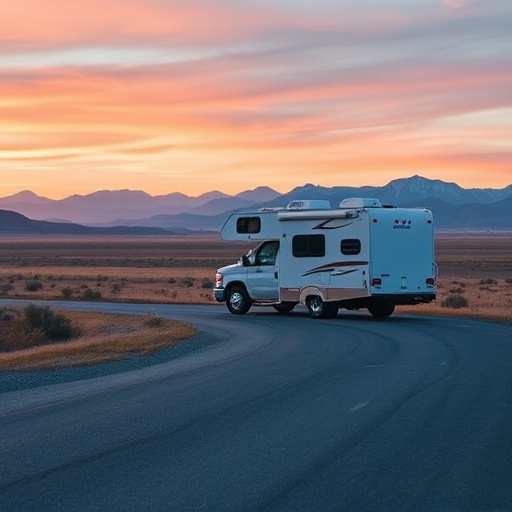RV tire pressure monitoring systems are a crucial safety feature for new RV owners, providing real-time data and alerts for optimal tire management. "RVing for Beginners" offers a comprehensive guide, emphasizing the importance of understanding tire care, including regular pressure checks and rotations, to prevent hazards like blowouts. Maintaining proper pressure enhances safety, fuel efficiency, and tire longevity, with recommended weekly checks or more frequent monitoring for long trips.
Enhance your RVing safety with tire pressure monitoring! This article guides beginners through understanding and implementing RV tire pressure monitoring systems, highlighting their crucial role in ensuring optimal vehicle performance. We explore the importance of correct inflation, delve into how these systems improve overall safety, and debunk common misconceptions. Additionally, discover best practices for maintaining your RV’s tire pressure, ensuring a smooth and secure travel experience for seasoned and new RV enthusiasts alike.
- Understanding RV Tire Pressure Monitoring Systems
- The Importance of Correct Tire Inflation for RVs
- How RV Tire Pressure Monitoring Improves Safety
- Common Misconceptions About RV Tire Care
- Best Practices for Maintaining Your RV's Tire Pressure
Understanding RV Tire Pressure Monitoring Systems

RV tire pressure monitoring systems are a crucial addition for any RV owner, especially those new to RVing. These innovative technologies provide real-time data on tire pressure levels, ensuring optimal performance and safety while on the road. By maintaining the correct tire pressure, these systems help prevent accidents caused by tire blowout or underinflation, which can be particularly hazardous when driving larger vehicles like RVs.
For RVing beginners, understanding how these monitoring systems work is essential. Sensors are strategically placed within each tire to detect any variations in pressure. This information is then transmitted wirelessly to a control center, typically located inside the RV. There, drivers receive instant alerts if a tire’s pressure deviates from the recommended range, allowing them to take immediate action and adjust accordingly. This simple yet powerful feature significantly enhances travel safety practices by empowering RV owners to maintain their vehicles effectively.
The Importance of Correct Tire Inflation for RVs

How RV Tire Pressure Monitoring Improves Safety

RV tire pressure monitoring is a game-changer for any RV enthusiast, especially those new to the world of RVing. By keeping a close eye on tire pressure, this technology significantly enhances safety during travel. For beginners, one of the key aspects to grasp is that correct tire inflation is crucial for optimal performance and stability, particularly when navigating varied terrains.
Improperly inflated tires can lead to unexpected issues like blowouts or reduced maneuverability, posing potential hazards. The monitoring system alerts RV owners to any pressure discrepancies, encouraging regular checks and prompt action. This proactive approach ensures tires are maintained at the recommended levels, thereby improving control, reducing wear, and enhancing overall safety for both the vehicle and its occupants, especially when traversing different road conditions during RVing adventures.
Common Misconceptions About RV Tire Care

Many new RV owners are unfamiliar with the intricacies of tire care, leading to several misconceptions. One common belief is that as long as the tires have adequate tread depth, they are safe to use. However, this is not entirely accurate; proper tire pressure monitoring is vital for RV safety, especially during long-distance travel.
Another misconception is that RV tires require less maintenance than regular cars. In reality, RVing for beginners should start with understanding that tire care involves regular pressure checks and rotations. Neglecting these practices can lead to underinflation or overinflation, both of which impact handling, fuel efficiency, and, most importantly, increase the risk of a blowout while on the road.
Best Practices for Maintaining Your RV's Tire Pressure

Maintaining proper tire pressure is a crucial aspect of RVing for beginners and experienced travelers alike. Before hitting the road, ensure your tires are at their recommended PSI (pounds per square inch). Most RVs have a specified tire pressure range printed on a sticker inside the driver’s door or in the owner’s manual. It’s best to check and adjust pressure when tires are cold, i.e., before driving, as heat can cause an expansion that may alter readings. Regular checks during trips are also essential, especially if you’re traversing varied terrain. Many RVs now come equipped with tire pressure monitoring systems (TPMS), which alert drivers to any significant pressure drops. For those without TPMS, a simple gauge is all you need for routine maintenance.
Best practices involve consistently monitoring and maintaining tire pressure according to the vehicle’s specifications. Keep a tire pressure monitor or gauge readily available in your RV, and make it a habit to check pressures weekly, or more frequently if you’re embarking on longer journeys. Remember, under-inflated tires can lead to reduced fuel efficiency, increased wear and tear, and even safety hazards like blowouts. Regular checks and proper inflation ensure a smoother ride, better control, and the peace of mind that comes with knowing your RV’s tires are in optimal condition.
For RV enthusiasts, especially those new to RVing for Beginners, understanding and maintaining proper tire pressure is a crucial aspect of ensuring a safe and enjoyable journey. RV tire pressure monitoring systems play a significant role in this process, allowing drivers to keep tabs on inflation levels and avoid potential hazards. By adopting best practices for tire care, including regular checks and adjustments, RV owners can enhance their safety on the road and enjoy peace of mind during their adventures.
